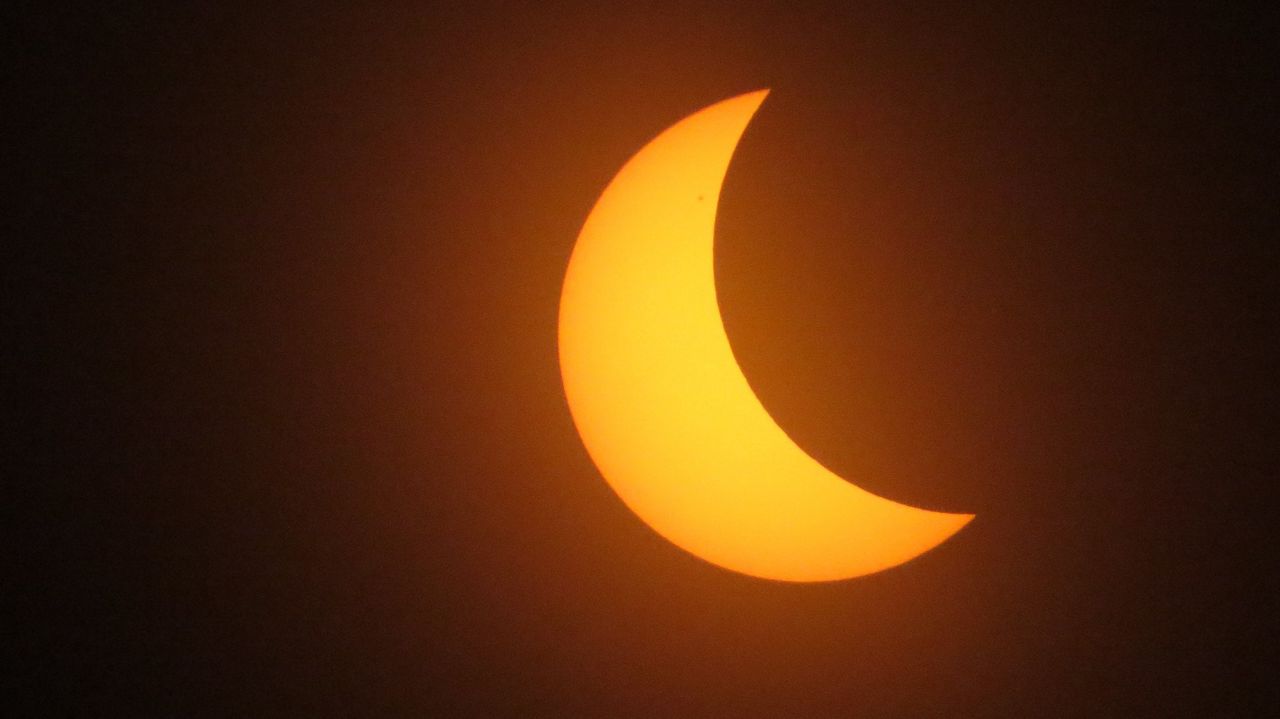FLORIDA — On Monday, April 8, skywatchers got to witness a rare celestial delight and something that will not be seen again over North American skies for more than 20 years: A total solar eclipse.
What You Need To Know
- For the Sunshine State, like many states, it was a partial solar eclipse
- Get more space coverage here ▶
Well, more of a partial total solar eclipse. Florida was not in the path to see the total solar eclipse, but the Sunshine State got to see a good bit of it.
In Central Florida, the moon was covering as much of the sun as possible — about 58%.
The #solareclipse has come to an end but I was able to capture the #TotalSolarEclipse right here.
— 🚀Anthony Leone🌕 (@AnthonyLeone) April 8, 2024
Learn more about the #eclipse in my article at @MyNews13: https://t.co/tPnQM4FsGR pic.twitter.com/G2R5hV1tRv
And it is a dramatic thing to see. Dr. Yanga Fernández, a professor of physics at the Planetary Sciences Group at the University of Central Florida, explained the celestial dance that happens between the sun, moon and Earth.
“It is a phenomenon where the moon appears to pass in front of the entire sun. It requires very precise alignment between Earth, the moon, and the sun, and in fact only a fraction of Earth's surface gets to experience a given total eclipse. There is a total solar eclipse somewhere on Earth about once a year, but often it happens at an inaccessible or inconvenient place,” he stated.
And it is true, we do not get to witness a total solar eclipse often. The Earth, sun and moon need to be in their respected positions, explained Dr. Denija Crnojevic.
“For a total solar eclipse to happen, we have to have a precise alignment between the Earth, the moon, and the sun,” stated Crnojevic, who is an assistant professor of physics at the University of Tampa.
This does not happen all the time because the sun and moon change positions in the sky throughout the year, Crnojevic noted.
Plus, a few other things must fit into place, such as the phases of the moon and the distance of it from Earth also changes, which creates a different type of eclipse. For this solar eclipse, Earth's lunar sister will be in the new moon phase.
“Finally, the moon's distance from the Earth also varies, and when the moon is at its closest, it will appear large enough in the sky to fully cover the sun; if more distant, it will appear smaller on the sky, and a so-called annular eclipse can happen,” Crnojevic stated.
An annular eclipse — when the moon is furthest away from Earth and does not fully cover the sun, also known as “a ring of fire” — was last seen in October 2023. And the next annular eclipse is Wednesday, Oct. 2, 2024.
And before that annular eclipse, there will be a partial lunar eclipse on Wednesday, Sept. 18, 2024.
2017’s total solar eclipse
The last time Floridians saw a solar eclipse was in 2017. Just like last time, this total solar eclipse will not be in the path of totality, Crnojevic said.
The 2024’s eclipse’s path passed over parts of Mexico, the U.S. and Canada. Those in the American states of Texas, Oklahoma, Arkansas, Missouri, Illinois, Kentucky, Indiana, Ohio, Pennsylvania, New York, Vermont, New Hampshire, and Maine (and small parts of Tennessee and Michigan) were lucky enough to be in the path of totality.
But as Fernández said, Florida could have expected to see a percentage of the total solar eclipse, just like last time.
“They will be fairly similar. In Central Florida, the 2017 one was also partial, just like April's, but from our vantage point more of the sun was covered up. So, if you saw the one in 2017 from this area, then this one in April will have a bit less of the sun blocked. But, it's still an interesting thing to see!” according to Fernández.
A partial solar eclipse will be over North America in January 2029 and the next total solar eclipse will be in August 2045.



